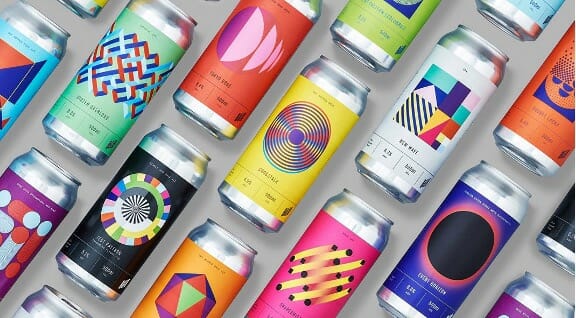Design is everywhere, it’s a statement most people, especially creatives, will have heard countless times. My first design tutor once proclaimed, ‘Supermarkets are a graphic designers art gallery’, and he was right. During my childhood this would ring true, as the unknown designer in me would spend ages staring up at the various packaging designs high up on the supermarket shelves, absorbing all the colours, fonts, and brand logos, that I can still remember today. Fast forward a few decades, I’ll often use a trip to the supermarket as an excuse for wandering slowly around the aisles, visually grazing far more packaging than I’ll ever intend to buy.
…So it’s unsurprising that I’ve ended up working for an agency that specialises in marketing and design for food and drinks brands.
This is where the majority of consumers will receive their daily stream of visual design, so frequently, that it will become almost unnoticeable.
Modern packaging brands will vie for your attention through ever developing design styles and trends, aiming to resonate their brand on your often overwhelmed consciousness. Well, almost all of them.
These are some up-and-coming design styles that we can be set to see more of, and some that have never changed at all.

Raake, by designers Andrea A. Trabucco-Campos and Simon Blockley
MINIMAL
Some brands shout loudly, others whisper in a sensitive way. It’s by no means a new design trend, but as 2022 continues to be a testing time for many, there’s never been a better time for calm and serenity. Flat colours, mixed with straight forward copy and minimal type, offer us a welcomed reduction of visual volume.
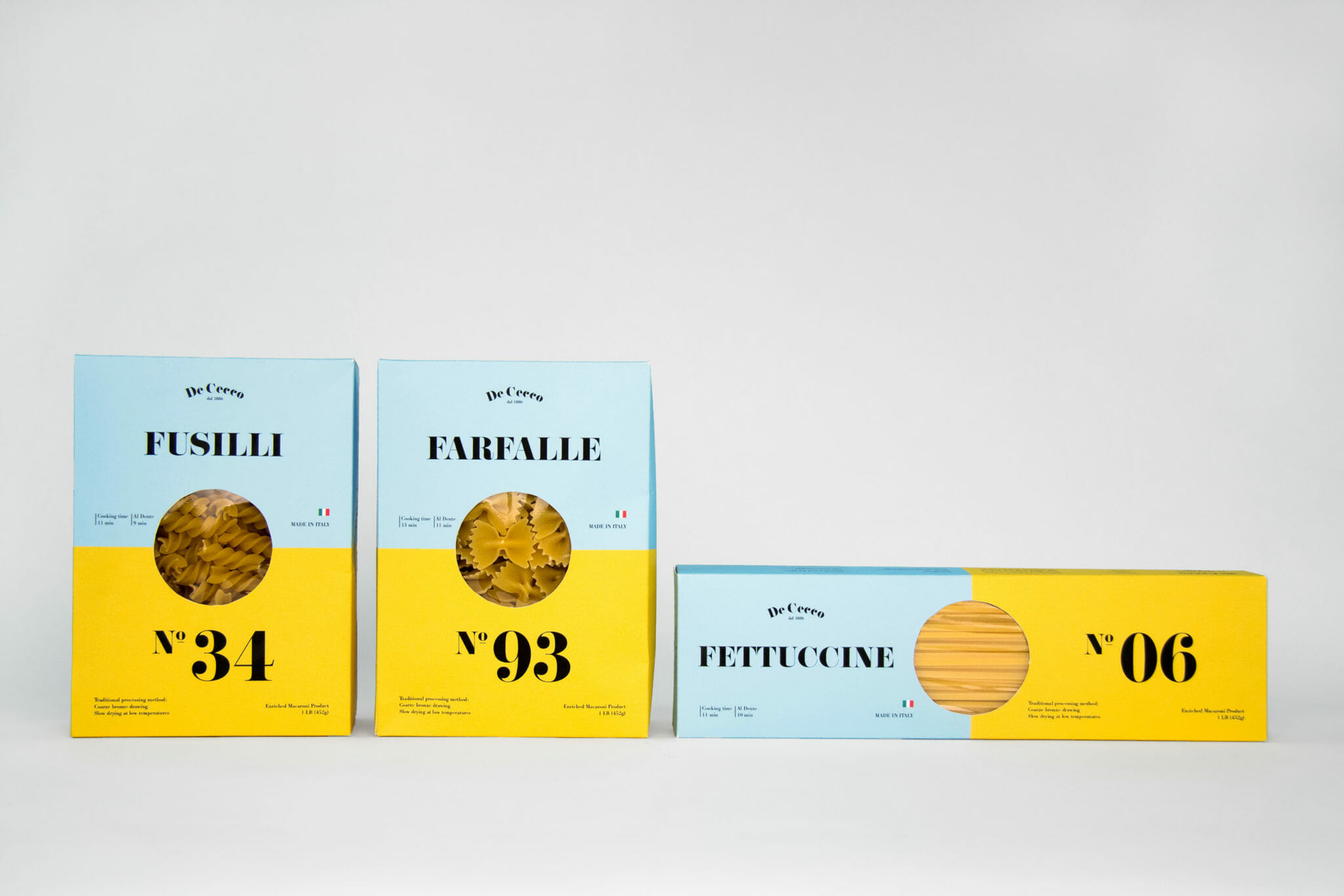
De Cecco Packaging design by Kajsa Klaesén,

Springs’ Smokery by Distil Studio, United Kingdom

Design by Akin.
QUIRKY MEETS MODERN RETRO
Rooted in the anti-design movement of the late 1960’s and early 70’s, quirky and retro design styles have made a comeback. We’re seeing brands make statements, with colliding images, retro illustrations, and distorted shapes. Add all of this to skewed type and bold colours and you have a style of design that creates a modern heritage look that references past and present.

Le Temps Chocolate, by Meeta Panesr

SOMA Brewing Co designed by Quim Marin Studio
BAUHAUS INSPIRED GEOMETRIC SHAPES
The early 20th century design style that’s still influencing creativity today. It’s been around for decades but has been reinvented by strong repeated lines, geometric shapes, and sharp corners. Its’ reinvention isn’t new anymore, but it’s still as prevalent as ever. We put this down to its use in UI design, as well as providing an easy to replicate style that fits a wide range of design applications. But this means that it’s become very overused. However, when used well it’s still an attractive packaging design style. Will 2022 see an end to this popular design trend?

Lighthouse Coffee Co designed by Ernie Holiday
ARTIST PARTNERSHIPS
Using packaging as a canvas for artists work is a both a creative expression, and a clever marketing strategy. It positions you as an artisan brand, gives you variety of design opportunities, and it places you in the creative community. Partner with an up and coming artist, and your brand will have instant kudos, not to mention being the talk of social media, and centre of focus on the shelf.
The Edinburgh-based chocolate company Coco does this really well, partnering with artists; Rachael Hood, Mari Campistron and Palefroi to create their unique and beautiful packaging.
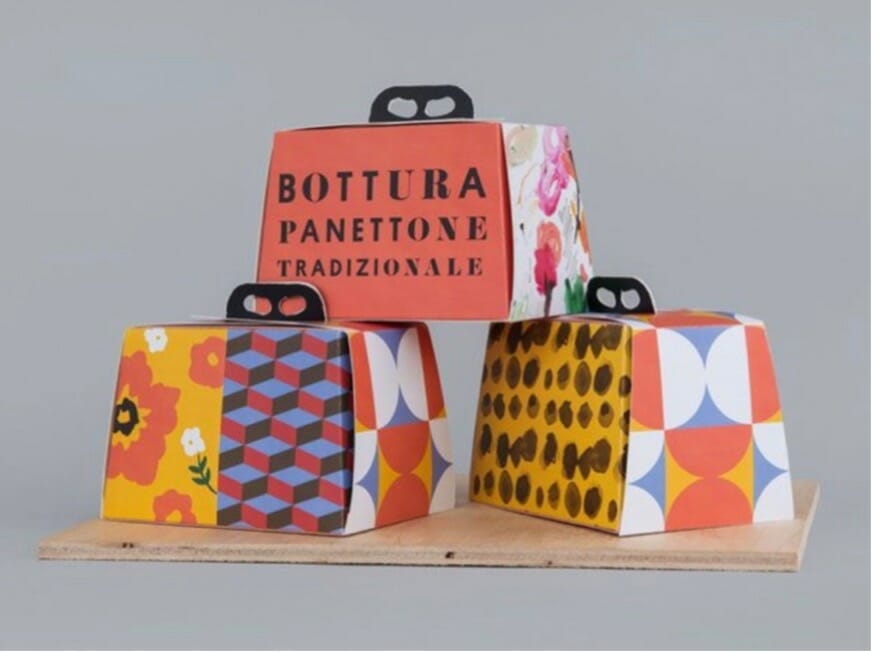
Bottura takeaway boxes.
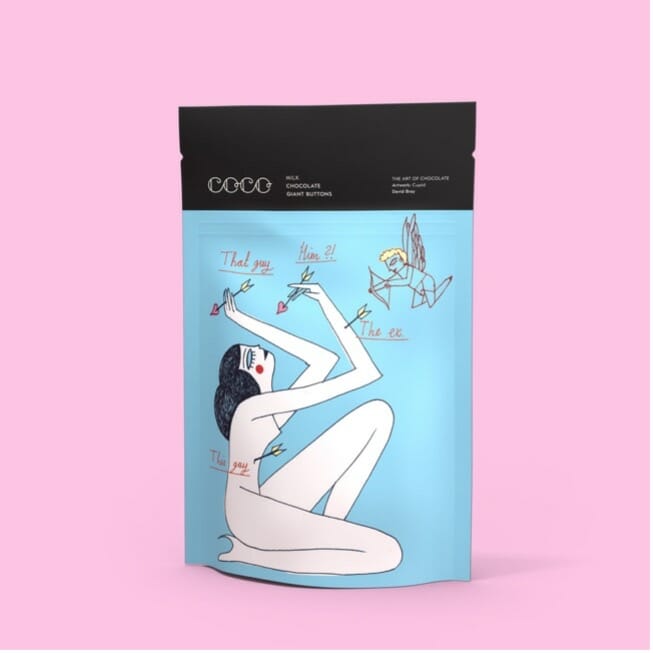
Designed by David Bray for Coco Chocolatiers

Designed by Rachael Hood for Coco Chocolatiers
FAUXSTALGIA
Impossible financial prospects, the pandemic, the climate crisis, working more hours than ever… gen Z are putting on their rose tinted glasses to look upon ‘better’, ‘funner’ times that they were not able to a part of…. Because they weren’t born yet!
Early 2000s fashion, 90s films, 80s music. They’re all being harnessed by the younger generation who wish they could live like people in the past did. To appeal to this desire, packaging design has begun to embrace this sense of “fauxstalgia” by decorating their products with imagery that reflects brighter times.
Punchy’s pre-mixed selzers, illustrated with 70s style idyllic summer illustrations carry the message that these are sophisticated tinnies that can transport us to a happy, summery moment, whatever the time of year, in a similar way to Club Kombucha and Dark Matters Coffee.
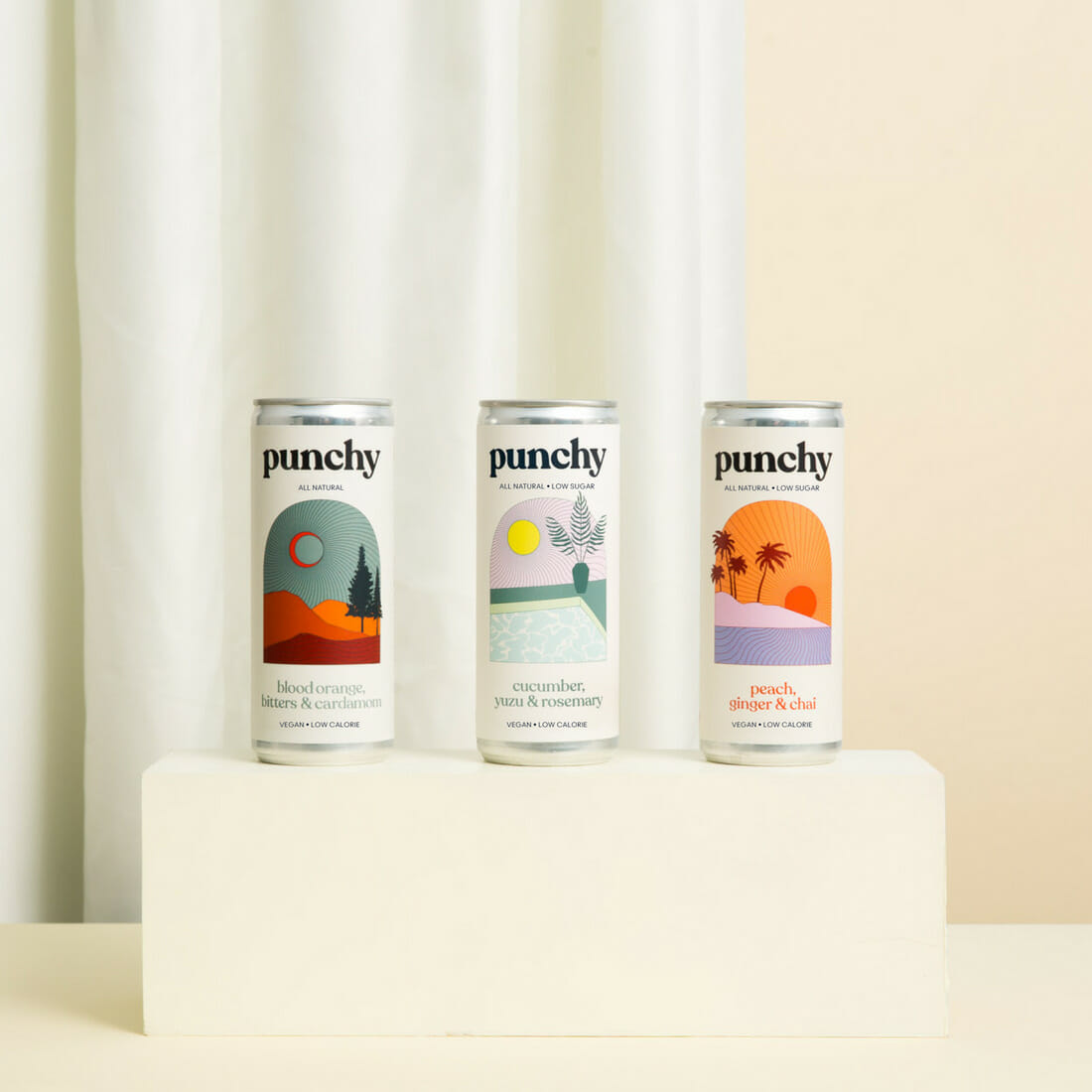
Image credit: Punchy Drinks

Image credit: Kombucha Club
GENDER NEUTRAL DESIGN
Products that are effective and appealing to everyone, without sacrificing the benefits of good and creative design are more prevalent than ever. This is the gender-neutral approach to branding – it is a universal experience, especially amongst the younger generation that they aren’t going to be sold on traditional and out-dated feminine and masculine ideals. Men drink whisky, women drink Selzer just wont cut it.
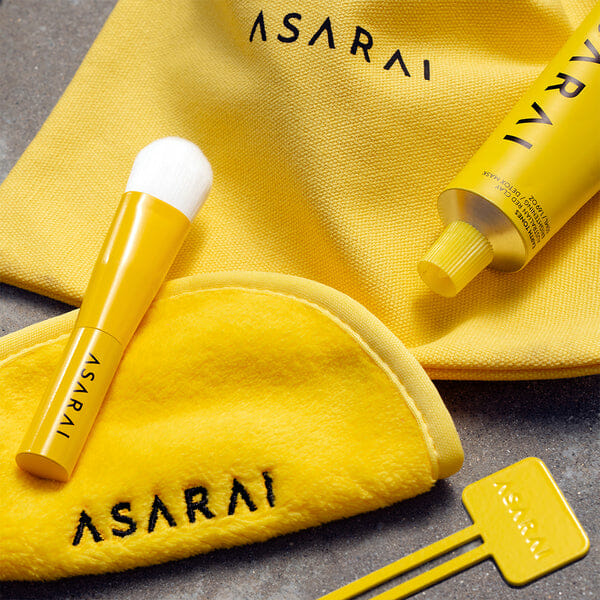
Image credit: Asarai skincare
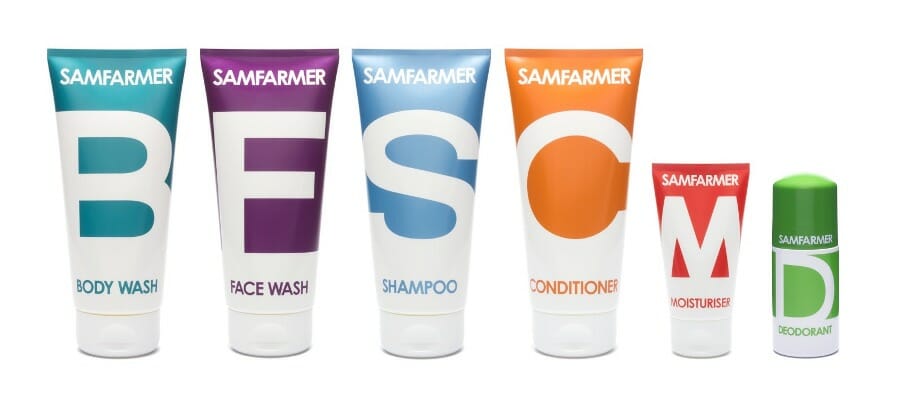
Image credit: Sam Farmer skincare
ECO FRIENDLY
Globally, 11 million tonnes of plastic packaging waste enter our oceans every year: this is one of many facts that have entered mainstream consciousness and created demand for environmentally friendly packaging.
In reaction to this, a lot of brands are taking steps towards more eco-friendly practises which often encompasses using recyclable materials rather than those that are going to be used up and end in landfill; using plant-based inks; and breaking the status quo by replacing unsustainable materials with ones that are and creating refillable packaging that can be used time and time again. Although product packaging may be becoming more sustainable, this does not mean that design must suffer.
Unocup have created a coffee cup, minus the plastic lid; boxed water have taken a stand against the ubiquitous plastic water bottle; and Seed and Bean package their ethically sourced chocolate in paper wraps and compostable foil.

Image credit: Boxed Water is Better
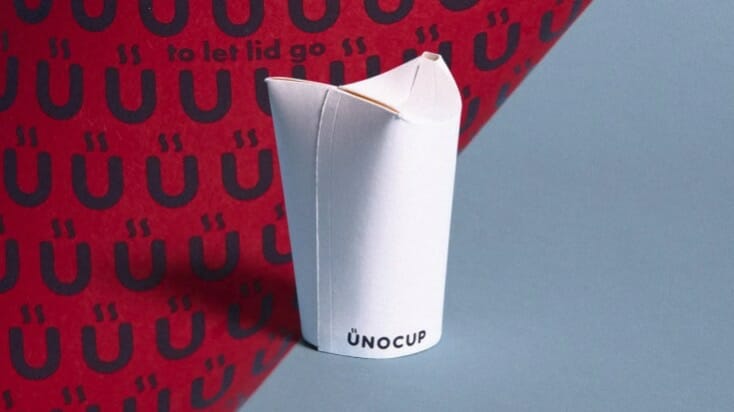
Designed by Unocup
Design trends aren’t clearly cemented until mid-way through the year, and we can expect to see new, unpredicted trends to emerge alongside these too.
By Andy Wright and Niamh Heron.

